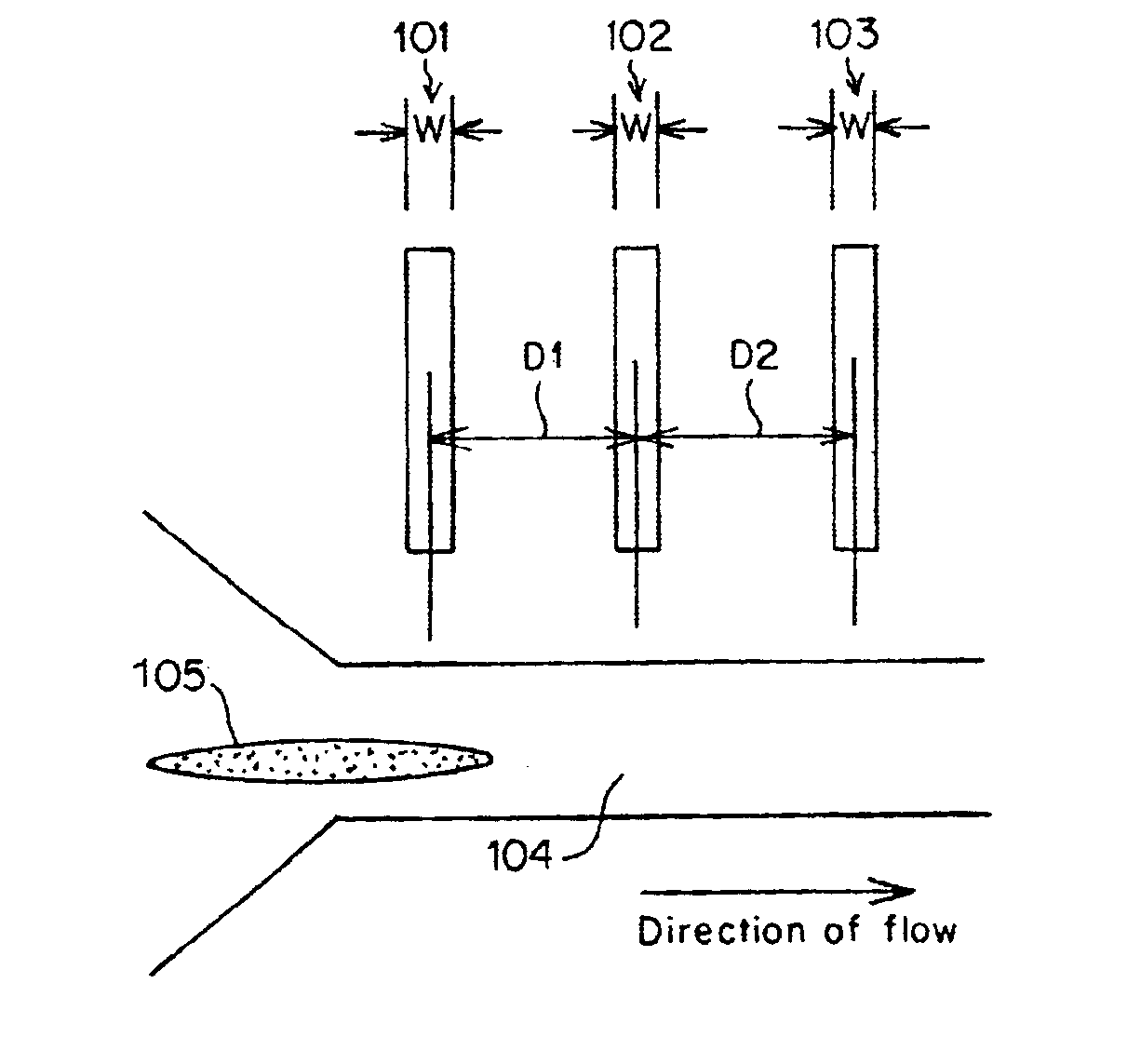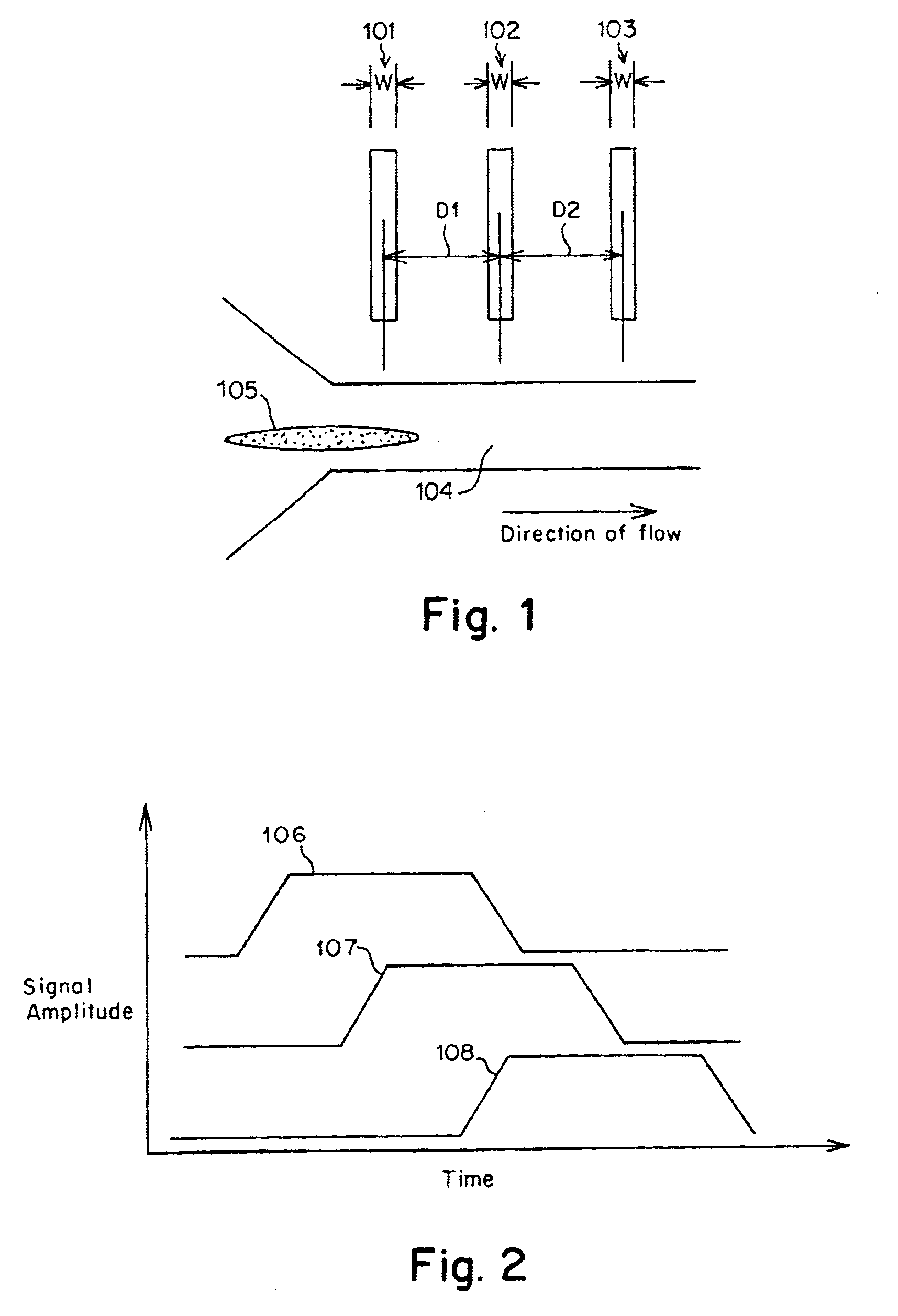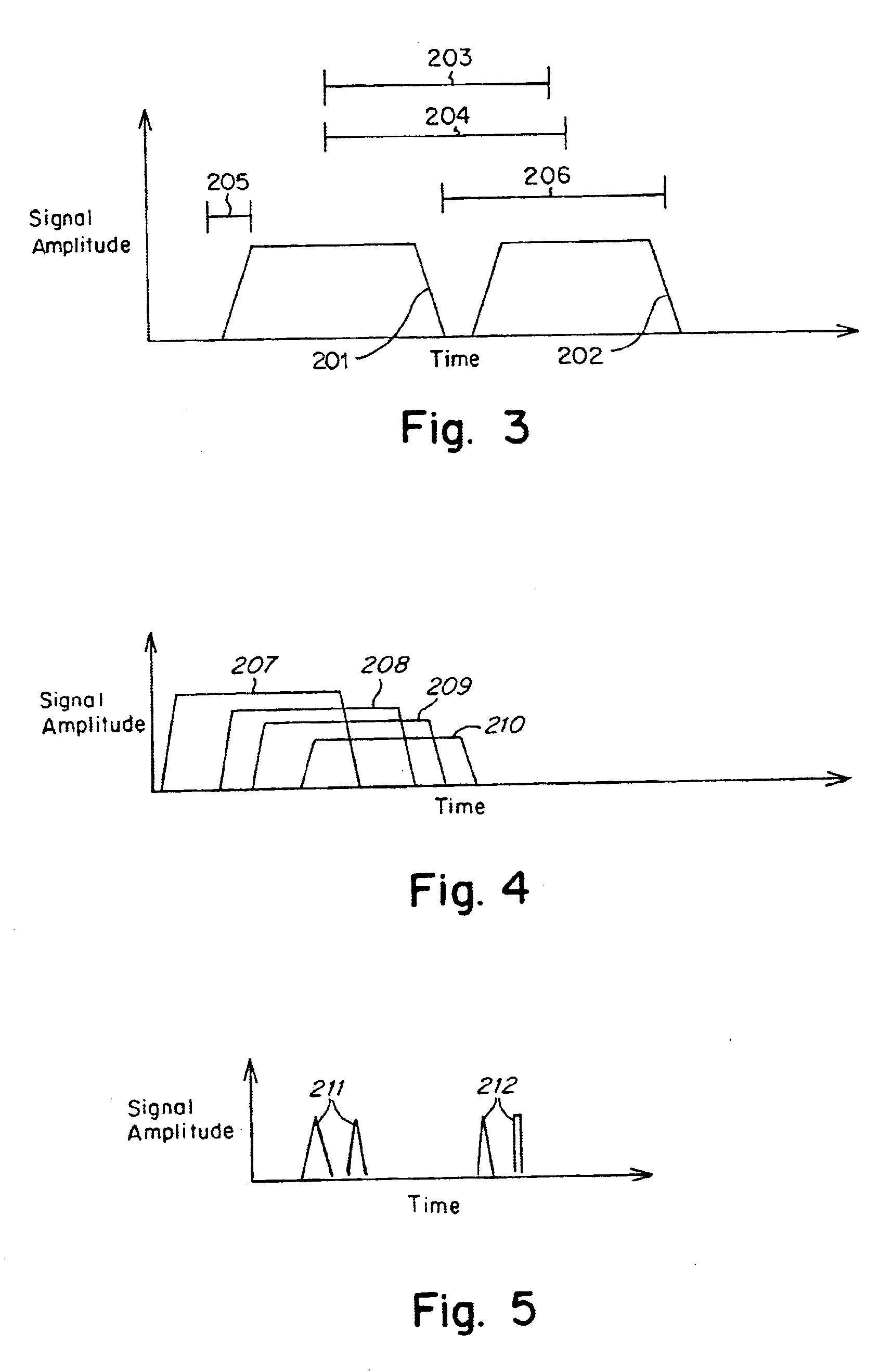Methods and apparatus for characterization of single polymers
a single polymer and characterization technology, applied in the field of molecular analysis and characterization, can solve the problems of tedious efforts in generating large amounts of sample material, method does not provide information regarding the internal structure of a molecule, and method does not use electrophoretic mobilities to determine the size of a molecul
- Summary
- Abstract
- Description
- Claims
- Application Information
AI Technical Summary
Benefits of technology
Problems solved by technology
Method used
Image
Examples
example
Stretching of Phage λ-DNA
[0095]FIGS. 11A-11C, 12 and 13 were derived using a dual laser spot arrangement as illustrated in FIG. 10. The DNA was driven through a quartz chip having an etched nanochannel of the following design: A nanochannel was formed in a 300 nm quartz chip using electron beam lithography. The process employed a series of lithographic steps known in the art, including a) coating the quartz wafer with a resist, b) exposing a pattern on the coated chip to an electron beam, c) stripping the exposed resist, d) etching using reactive ion etch to give straight wall profiles, and e) removing the remaining resist.
[0096]The detection zones were laser spots formed by an argon ion laser running at 488 nm and delivering about 2 mW of laser power to each of the spots. The spots were diffraction limited, with a spot size of approximately 0.5 microns in diameter. The laser spots were spaced 15 mm apart and located within the nanochannel in the path of the DNA molecules. A carrier...
PUM
| Property | Measurement | Unit |
|---|---|---|
| Length | aaaaa | aaaaa |
| Electrical conductance | aaaaa | aaaaa |
| Elongation | aaaaa | aaaaa |
Abstract
Description
Claims
Application Information
 Login to View More
Login to View More - R&D
- Intellectual Property
- Life Sciences
- Materials
- Tech Scout
- Unparalleled Data Quality
- Higher Quality Content
- 60% Fewer Hallucinations
Browse by: Latest US Patents, China's latest patents, Technical Efficacy Thesaurus, Application Domain, Technology Topic, Popular Technical Reports.
© 2025 PatSnap. All rights reserved.Legal|Privacy policy|Modern Slavery Act Transparency Statement|Sitemap|About US| Contact US: help@patsnap.com



